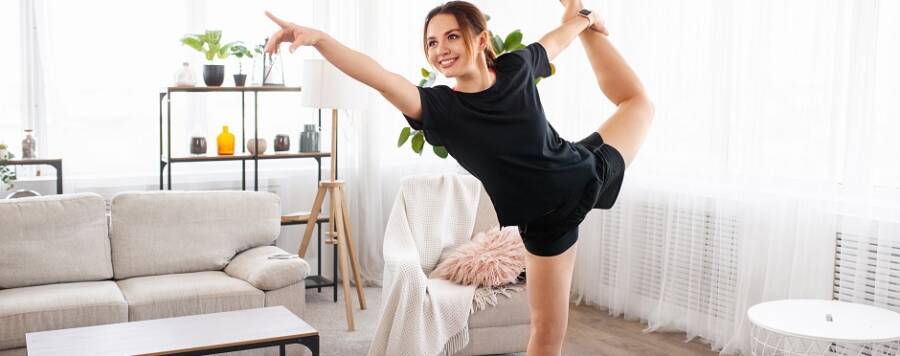Stretching is used to improve mobility and flexibility depending on the type of stretching used. Stretching can be performed dynamically and statically. Dynamic stretching is defined as moving through a specific motion without holding which can be utilized to increase mobility. Static stretching is a stretch performed with a hold of a certain duration, used to increase flexibility.
General principles for stretching include:
- Dynamic stretching should be performed prior to activity, exercise, or sports
- Static stretching should be performed after an activity to prevent stiffness and soreness
- These principles can change in the setting of rehabilitation
Here, you will find six tips to practice safe stretching within gymnastics and dance activities. Take a look below!
1. Warm Up
Allowing muscles and joints to warm up is essential prior to stretching. This helps to improve circulation and tissue extensibility, making your stretching session most beneficial.
2. Understand What Type Of Stretching To Perform
Dynamic stretching should be performed before an activity as an important part of a warmup. Static stretching should be performed at the end of practice to reduce stiffness and soreness.
3. Stretching Should Not Be Painful
While stretching may cause a pulling sensation that is uncomfortable, stretching should never be painful. Pain will increase muscle tension and reduce the ability to stretch. It can also be an indicator that there is something more than a flexibility issue going on and should be checked out by a professional. A dancer or gymnast should not be pushed into a stretch as this could cause injury to a muscle when the safety mechanisms within muscle fibers are overloaded.
4. Posture and Technique Matter!
Focusing on performing exercises correctly helps ensure they are most effective which can help to prevent injury.
5. Focus On Your Breathing
Breathing during stretching is crucial. Breathing helps to regulate our fight-or-flight response. When breathing is controlled and regulated, this can help to not only improve how you feel while you stretch but can also allow for more improvement in mobility.
6. Meet With An Athletico Gymnastics Or Performing Arts Specialist
Proper stretching utilization is a simple way to prevent injury in gymnastics and dancing, and building an all-inclusive program is the key to success. Seek professional advice from one of Athletico’s gymnastics or performing arts team members regarding your current stretching program.
Athletico offers free assessments via telehealth or in-clinic. If you notice abnormal soreness, aches, or pains with stretching during practice or other times, contact Athletico. Our team will assess your pain and provide recommendations for a treatment plan.
*Per federal guidelines, beneficiaries of plans such as Medicare, Medicaid, Tricare, VHA and other federally funded plans are not eligible for free assessments.
The Athletico blog is an educational resource written by Athletico employees. Athletico bloggers are licensed professionals who abide by the code of ethics outlined by their respective professional associations. The content published in blog posts represents the opinion of the individual author based on their expertise and experience. The content provided in this blog is for informational purposes only, does not constitute medical advice and should not be relied on for making personal health decisions.
References:
1. Here’s the difference between flexibility and mobility – and why it matters. (n.d.). https://health.usnews.com/health-news/diet-fitness/fitness/articles/2018-05-29/heres-the-difference-between-flexibility-and-mobility-and-why-it-matters
2. Six tips for safe stretches. Harvard Health. (2019, December 11). https://www.health.harvard.edu/staying-healthy/six-tips-for-safe-stretches
About the Author:
Paige Gibbens is a physical therapist specializing in lower extremity treatments and is certified in dry needling and Graston. She is also the Missouri & Southern Illinois regional coordinator for Athletico's Endurance Program.

 width="900"
height="356"
>
width="900"
height="356"
>
